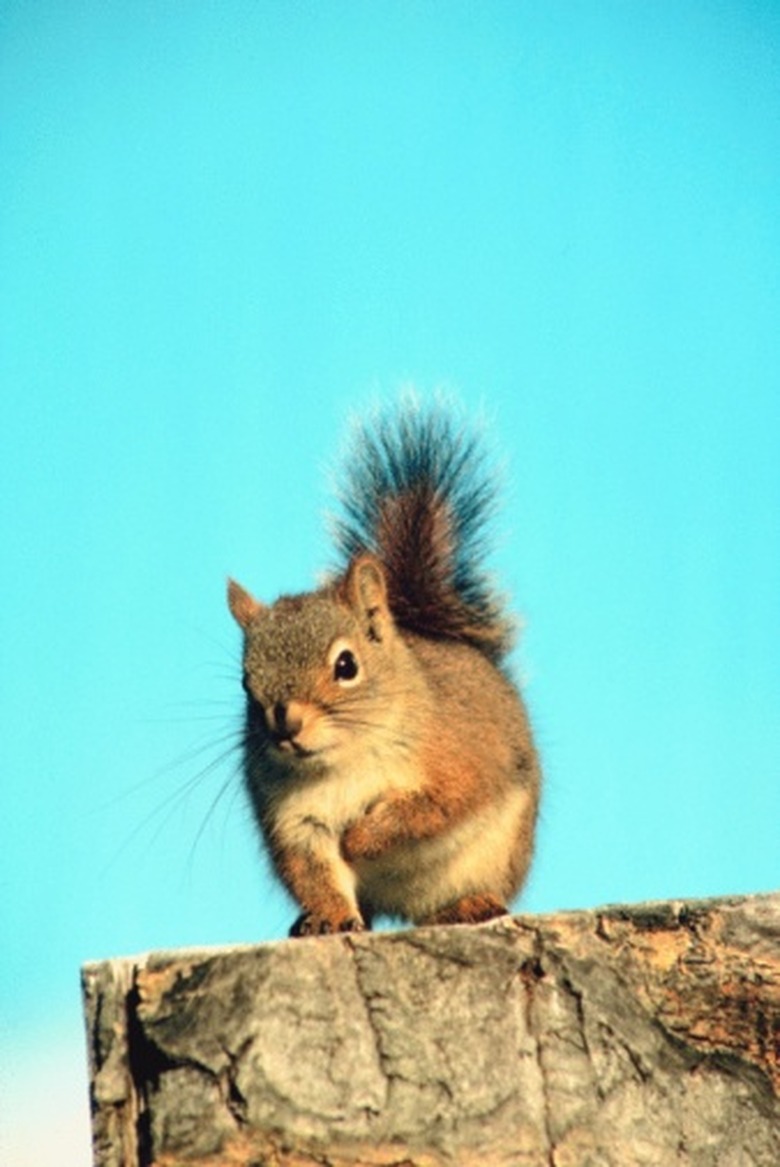What Kinds Of Plants Do Squirrels Hate?
Squirrels are widespread pests in most United States gardens. They frequently defoliate shrubs, trees and flowers, damage that isn't usually fatal to plants but can leave a garden looking disheveled. When planning your landscape, consider a number of plant varieties that are unattractive to these rodents. These selections are similar to those that repel rabbits and deer and will serve multiple purposes where necessary.
Rodent-Resistant Plants
It is important for growers to remember that no plant is 100 percent resistant to rodent damage. What may resist damage in one area may very well be eaten in another. This may be due to the differing species of squirrels or because of differing conditions in each region. Growers will have the best luck planting species with strong scents, spikes and spines, leathery leaves or those that are toxic to animals. But no matter what is planted, a hungry animal may find it appealing.
Shrubs
Shrubs are common garden plants, and next to flowers, perhaps the most widely damaged by squirrels. These plants are useful for providing texture and color and are widely used to mark borders and provide privacy. Both the alpine and the golden currant shrubs are ideal for creating a squirrel-proof garden. The alpine currant is a rounded shrub that reaches a mature height between 3 to 6 feet with an equal spread. It thrives in zones three through seven and prefers a spot with full sun or shade and soil that is moist and well-drained. It is fairly adaptable and will do fine in dry soil. Additional choices include the Apache plume, boulder raspberry and the cotoneaster.
Bulbs
Planting bulbs is fairly common in gardens, as they provide bold colors and visual interest upon blooming. Squirrels easily damage these flowers, particularly when first blooming. Selecting bulbs that are either strongly scented or toxic to animals are ideal, including daffodils. The flavor of these flowers is highly unappealing, and most parts are poisonous to squirrels. Once established, they require little help to thrive and do best in an area with full sun and nutrient-rich, well-draining soil. The winter crocus, alliums, Lily-of-the-Valley and delphiniums are also ideal choices.
Perennials
Perennial plants are those that live for several years. They are an ideal selection for gardeners who want to spend time cultivating their space. Most species of geraniums are an appropriate selection for adding color and texture to the garden. These flowering plants offer approximately 33 varieties and are adaptable to most soil conditions. Flowering is at its best when soil is moist, well-draining and there is ample sun exposure. Once established, geraniums require little care or pruning from the grower. Sagebrushes, basket of gold, bleeding heart, thyme and chives are other alternatives.
References
- University of Illinois: Alpine Currant
- American Daffodil Society: Homepage
